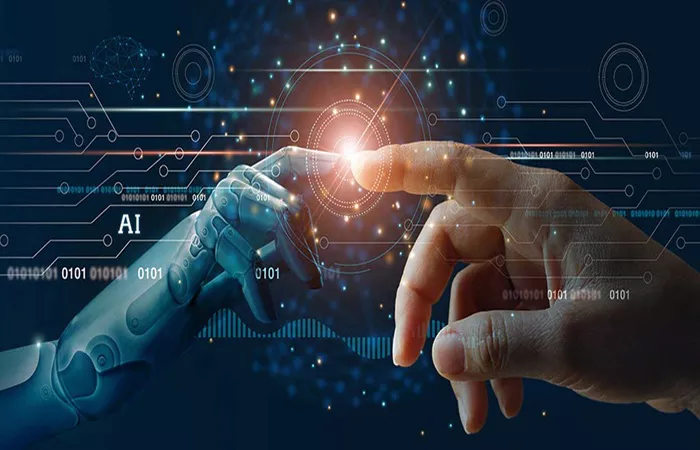Artificial intelligence (AI) is driving rapid advancements across electronics, raw materials, and consumer goods industries, with widespread applications in R&D, testing, production, and operations. Its empowering effects are becoming increasingly evident, particularly in manufacturing, where AI has emerged as a key driver of innovation and efficiency.
Strengthening Technological Foundations
“The manufacturing sector serves as a critical testing ground for AI technologies,” noted Xie Shaofeng, Chief Engineer of the Ministry of Industry and Information Technology (MIIT). In recent years, the integration of AI and manufacturing has accelerated, with domestic firms developing over 100 smart products such as AI-powered phones, computers, and glasses. Additionally, more than 400 national-level specialized and sophisticated “little giant” enterprises in AI have emerged, optimizing the industry ecosystem.
China has established a complete industrial chain covering foundational layers, algorithm frameworks, model layers, and application layers. Yu Ping, a researcher at the CCID Research Institute, highlighted achievements such as high-quality industry datasets in steel and coal, and the development of domestic open-source large models, demonstrating China’s rapid progress in AI.
MIIT has intensified efforts to advance AI chips, algorithm frameworks, and large models, supporting the creation of national manufacturing innovation centers for embodied intelligence, humanoid robots, and intelligent voice. At Shanghai-based Zhiyuan New Creation, engineers use the Genie Studio platform to train humanoid robots, addressing industry challenges like data acquisition and model training. The company’s recently launched Qiyuan large model enhances robots’ learning and adaptability through video training and small-sample generalization.
However, while China’s computing power capacity reaches 280 EFLOPS with over 9 million standard server racks, fragmented and unevenly distributed resources limit cross-system scheduling efficiency. Shanghai-based Unchipsky has developed a “heterogeneous cloud” to integrate computing power across different chips, improving resource utilization and supply chain resilience.
“MIIT will launch an ‘open challenge’ initiative to advance general and industry-specific large models, build high-quality industrial datasets, and strengthen technological foundations,” Xie added.
Driving Flexible Manufacturing Upgrades
Mass production models are giving way to customized, flexible manufacturing, with digital technologies playing a pivotal role. At Shanghai Turbine Works, AI and IoT have been integrated into a smart manufacturing system to address the challenges of small-batch, multi-variety production. The digital workshop uses real-time data to optimize quality control, cost management, and delivery schedules, with intelligent scheduling systems cutting production planning time by over 50%.
“AI enhances production lines’ ability to handle customized demands through real-time data analysis and adaptive control,” said Yu Ping. In production planning, AI dynamically adjusts processes based on market demand, reducing changeover times and inventory costs. In supply chain coordination, real-time data sharing ensures material delivery for customized orders.
Enhancing Productivity and Cost Efficiency
AI and large models are transforming manufacturing by enabling data-driven decisions, process automation, and knowledge integration. At Jiangsu Hengtong Optical Fiber, digital simulation and AI analysis reduced R&D time for specialized optical fibers from six months to two weeks. Liugang Group’s Cold Rolling Plant uses the DeepSeek-powered Smart Coil Assistant to optimize production scheduling, reducing costs and stabilizing equipment operations.
DingTalk’s AI assistant provides real-time insights into production progress, costs, and equipment status, enabling transparent management and cross-departmental collaboration. For example, in acid rolling lines, AI-driven data analysis reveals cost savings of ¥13 per ton for 0.8mm-thick steel plates, guiding optimal production planning.
Despite these advances, AI applications in manufacturing remain in their early stages, with challenges including model adaptation to complex industrial scenarios and weak intermediate service links. Yu Ping recommended continuing to optimize models and computing power, cultivating AI service providers, and building industry-specific large model platforms to lower adoption barriers and drive full-process intelligent upgrades.
As AI continues to penetrate manufacturing, China is poised to lead in transforming traditional industries, balancing technological innovation with practical applications to shape the future of intelligent manufacturing.
Related topics:

